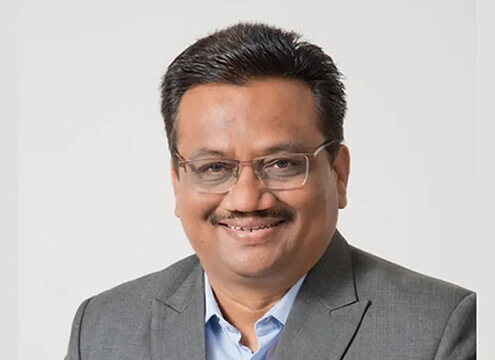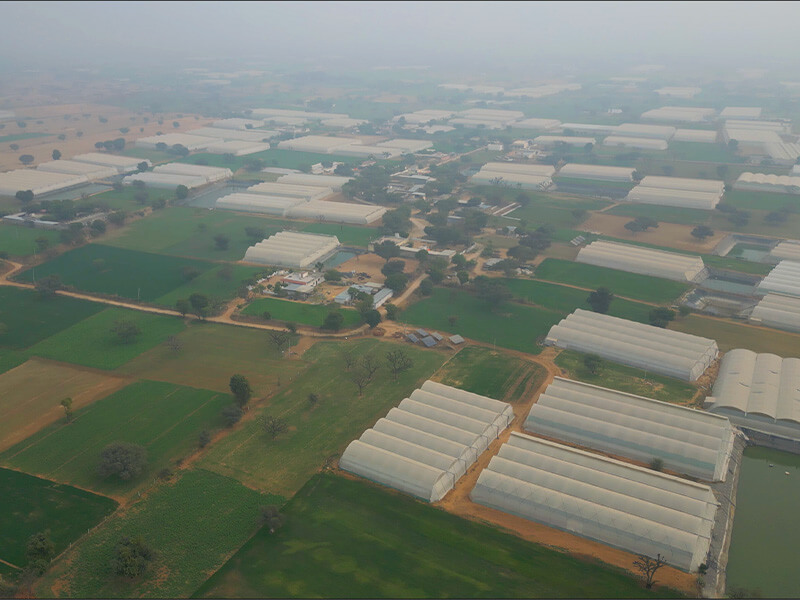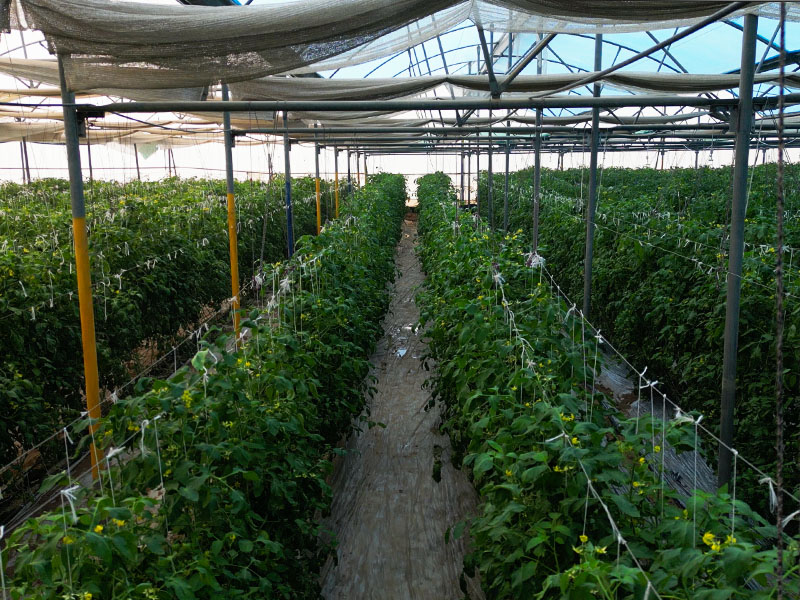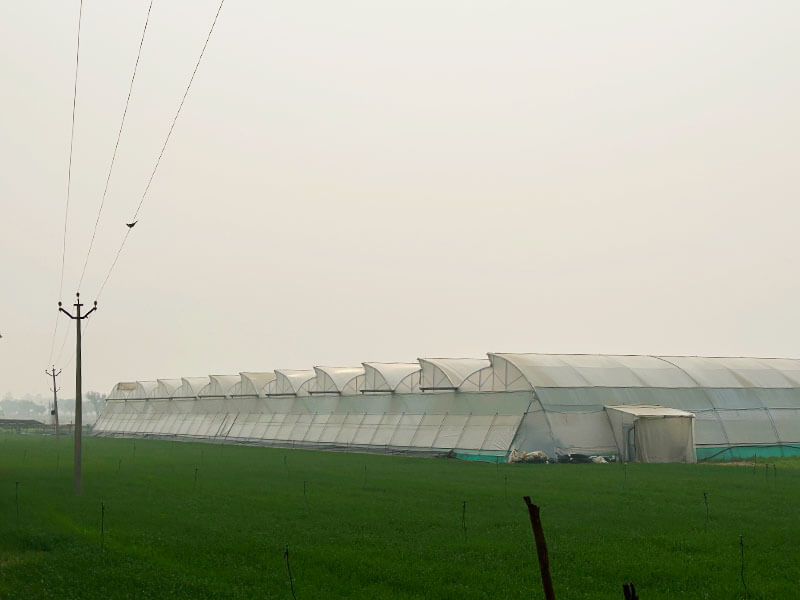The 500-odd farmers of Gurha Kumawatan, a village in arid Rajasthan, are now millionaires thanks to polyhouse farming. Their hard work, innovation and unlimited ambition offers a path to prosperity for others in India.
As climate change disrupts India’s fields, precision farming offers a roadmap to feed the future sustainably, smartly, and at scale.
 Vikas Sonawane
Vikas Sonawane 
The Indian agriculture has always been a story of grit and resilience— navigating the rhythms of monsoons, shifting seasons, and evolving market demands. But today, the stakes are far higher. Climate change is no longer a distant threat—it is a present and growing challenge impacting millions of farmers every day. Unseasonal heatwaves, erratic rainfall, and extreme weather conditions are disrupting traditional farming cycles, threatening both livelihoods and national food security. India is among the most climate-sensitive agricultural economies in the world.
According to the Indian Meteorological Department, 2023 was India’s fifth warmest year on record, with severe heatwaves affecting over 20 million hectares of farmland. Meanwhile, the Economic Survey 2023–24 reports a 4–6% decline in wheat and rice productivity in some states over the last five years—a stark indicator of the mounting pressure on our food systems.
In late 2024, farmers in Rajasthan faced temperatures soaring 2–7°C above normal, prompting a shift to more heat-resilient crops. At the same time, flash floods devastated large tracts of farmland in Himachal Pradesh and Kerala. With over 55% of India’s agricultural land still dependent on monsoons, the need to transition from reactive to predictive farming has never been more urgent. To feed 1.4 billion people sustainably while conserving natural resources, India must accelerate the adoption of climate-smart farming practices—anchored in data, powered by technology, and driven by insights.
Precision farming: A sustainable solution
The answer lies in precision agriculture—a transformative approach that combines technology with traditional wisdom. By leveraging real-time data, remote sensing, AI, and IoT, farmers can make better decisions about when, where, and how to farm. This shift from input-heavy to insight-driven agriculture is not just sustainable; it is smart economics.
Precision farming helps optimize every drop of water, every unit of fertilizer, and every minute of farm labor. Variable rate technology (VRT), for example, enables targeted application of nutrients and crop protection, reducing input costs by up to 30%. GPS-guided sowing and harvesting increase efficiency and minimize wastage. Netafim India has been at the forefront of this transformation.

Drip irrigation, a cornerstone of precision agriculture, delivers water and nutrients directly to the plant root zone. Studies show it can save 30–70% of water while boosting crop productivity by 20–60%. In water-stressed regions, this can mean the difference between crop failure and a bumper harvest. The Indian Council of Agricultural Research (ICAR) estimates that adopting precision farming methods can increase productivity by 15–25% while reducing input usage by up to 35%. These are not just numbers, they represent better incomes, reduced risk, and a pathway to climate resilience.
Data: the new fertilizer
Technology is becoming the new lifeline of Indian agriculture. With over 1,300 AgriTech startups and a projected market value of $24 billion by 2025 (as per FICCI-EY), innovation is rapidly democratising access to digital soil maps, crop analytics, precision irrigation, and weather forecasting.
Startups are offering AI-based crop advisories, drone-enabled field operations, and market linkages, helping farmers make better decisions and improve profitability. These innovations, once considered niche, are now gaining scale thanks to robust policy support and expanding infrastructure. Government initiatives such as the Digital Public Infrastructure (DPI) for agriculture, Per Drop More Crop under RKVY, and PM-KUSUM for solar irrigation are laying the foundation for a digitally connected and tech-enabled rural economy. The Unified Farmers Service Platform (UFSP) is an important step in integrating critical services—from weather alerts and crop insurance to credit access—into a unified, farmer-centric ecosystem. Together, public policy and private innovation are enabling a shift from reactive to proactive agriculture. India is not just digitizing farming—it is futureproofing it.
Digital tools are no longer optional, they are essential. From soil health cards to satellite-based yield forecasting and blockchain-enabled supply chains, data-driven technologies are redefining how farms are managed. The result is greater resilience, reduced input dependency, and improved environmental outcomes. Schemes like Agri Infra Fund, and the National Mission on Sustainable Agriculture (NMSA) are accelerating this transition. By promoting solar irrigation, post-harvest infrastructure, and precision solutions, these policies are making climate-smart agriculture accessible, particularly for smallholders. The Government’s push for DPI is helping ensure that even marginal farmers benefit from these innovations. Seamless service delivery through digital platforms is bridging information gaps and enabling smarter, faster decisions at the farm level.

As India’s population is projected to touch 1.7 billion by 2050, food demand is expected to rise by nearly 70%. Meeting this demand sustainably—without expanding arable land—requires a fundamental shift in how we farm. As India moves toward its centenary milestone in 2047, we must ensure that every farmer is climate-ready, tech-enabled, and financially empowered. Precision agriculture is not just about increasing yields—it’s about making farming future-proof. By adopting sustainable practices, optimizing resource use, and embracing innovation, we can build a farming ecosystem that is not only more productive but also more resilient to climate shocks. This is essential not just for farmers, but for the nation’s food and economic security.
It’s time to reimagine Indian agriculture—not just as a sector, but as a smart, sustainable ecosystem rooted in tradition and driven by innovation.
(Vikas Sonawane is COO, Netafim India)
The 500-odd farmers of Gurha Kumawatan, a village in arid Rajasthan, are now millionaires thanks to polyhouse farming. Their hard work, innovation and unlimited ambition offers a path to prosperity for others in India.